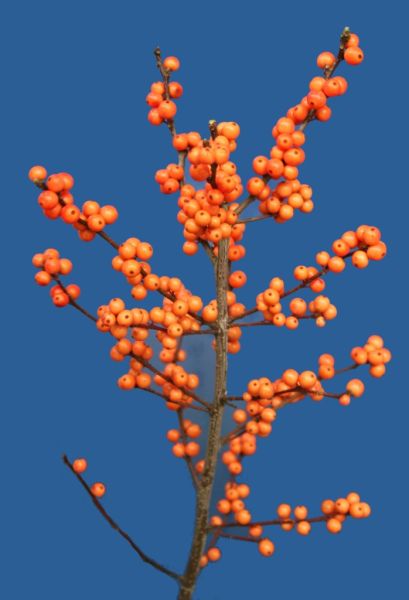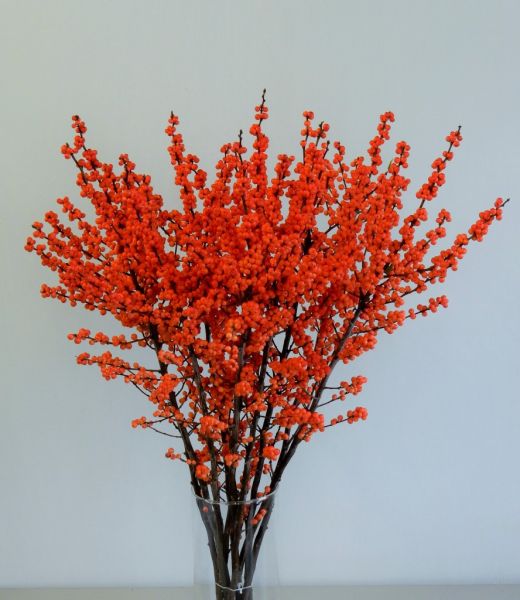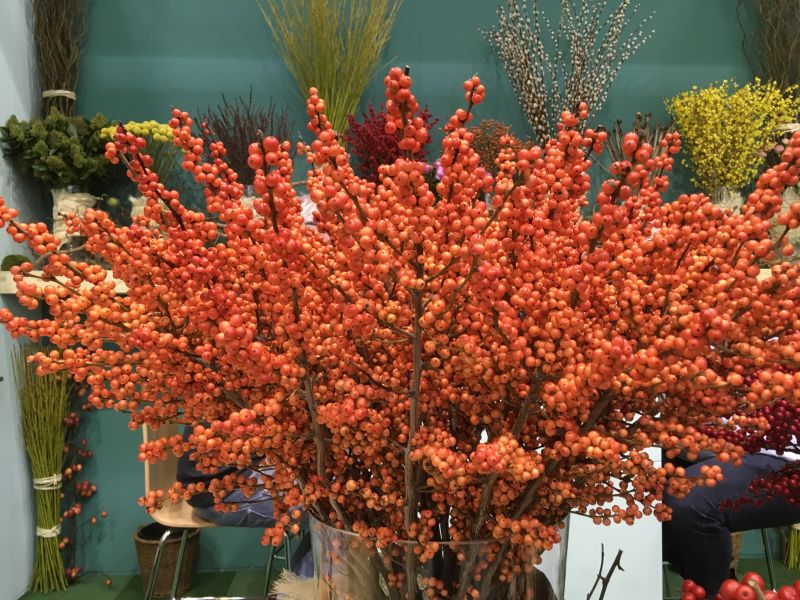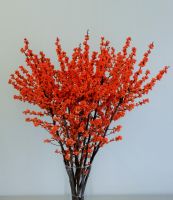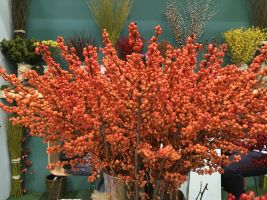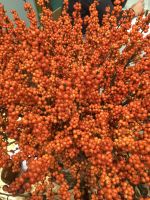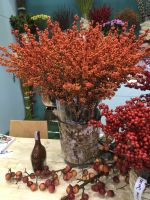Ilex verticillata Magical® Daydream
Abundant clusters of bright orange berries on an upright, rounded shrub
Acclaimed for its abundant clusters of bright orange fruit, Magical® Daydream brings a new appreciation of our beloved eastern North American native, commonly referred to as “winterberry”. With an upright, rounded habit, dark-green leaves warm to coppery gold in the fall before dropping to expose the ample berries, which persist from early fall into winter, and provide substantial winter interest and nourishment for wildlife. An easy plant to site, winterberries are adaptable to most soils, but prefer moist, organic loams that are on the acidic side—the perfect choice for naturalized settings. As an added bonus, long, straight stems laden with orange fruit can be cut for flower arrangements, filling your living spaces both inside and out with color.
Notes: cuts can be used dry—they’ll keep indoors for several weeks—no need to keep them in water. Tolerant of many soil types, this plant thrives in wet areas, providing nesting opportunities and forage for birds. Magical® Daydream is a female holly. Winterberries need one male pollinator for 10 females to provide adequate pollination. Use ‘Southern Gentleman’ as the male.
Who Am I?
-
Common Name:Magical®️ Daydream winterberry holly
-
Botanical Name:Ilex verticillata ‘Kolcaroda’
-
Type:Shrub
-
U.S. Native:YES
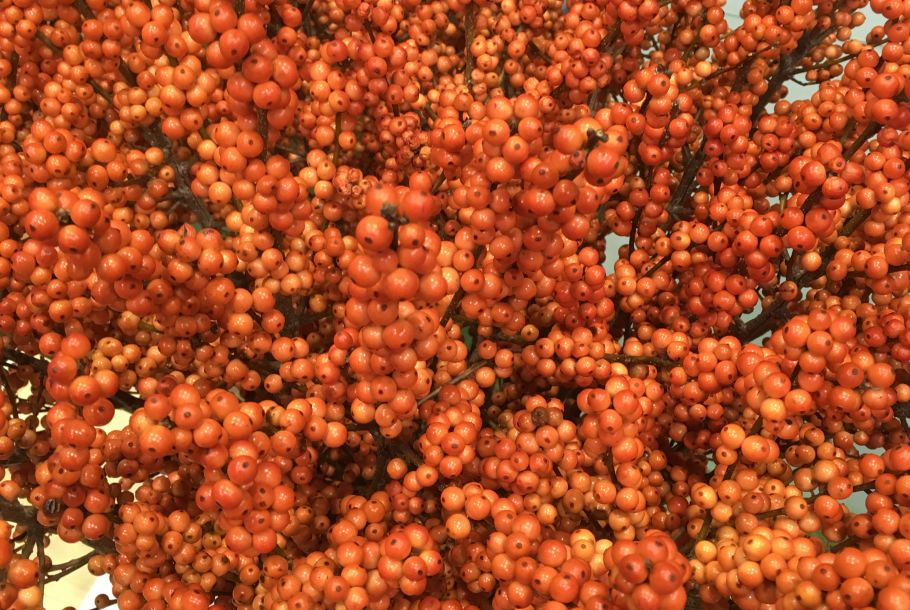

Cultural Details
TYPE
U.S. NATIVE
-
Light:Full sun to part shade
-
Soil:Average garden soil
-
Moisture:Moist, but well drained
-
Hardiness Zone4-9
-
Bloom Time:Spring
-
Bloom Color:White
-
Fruit TimeFall to winter
-
Fruit ColorOrange
-
Size:6-8' tall by 6-8' wide
-
Diseases & Pests:None known
